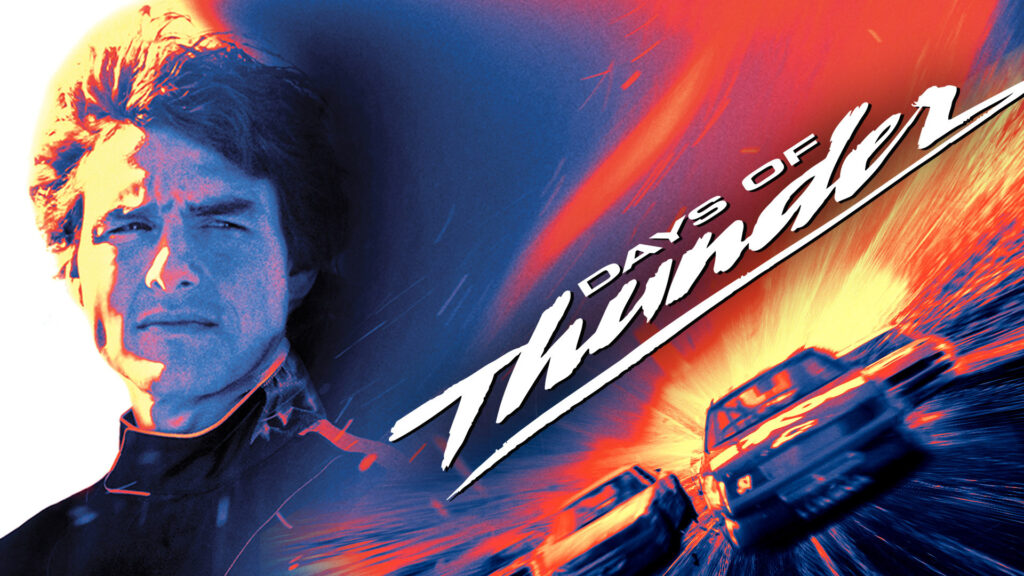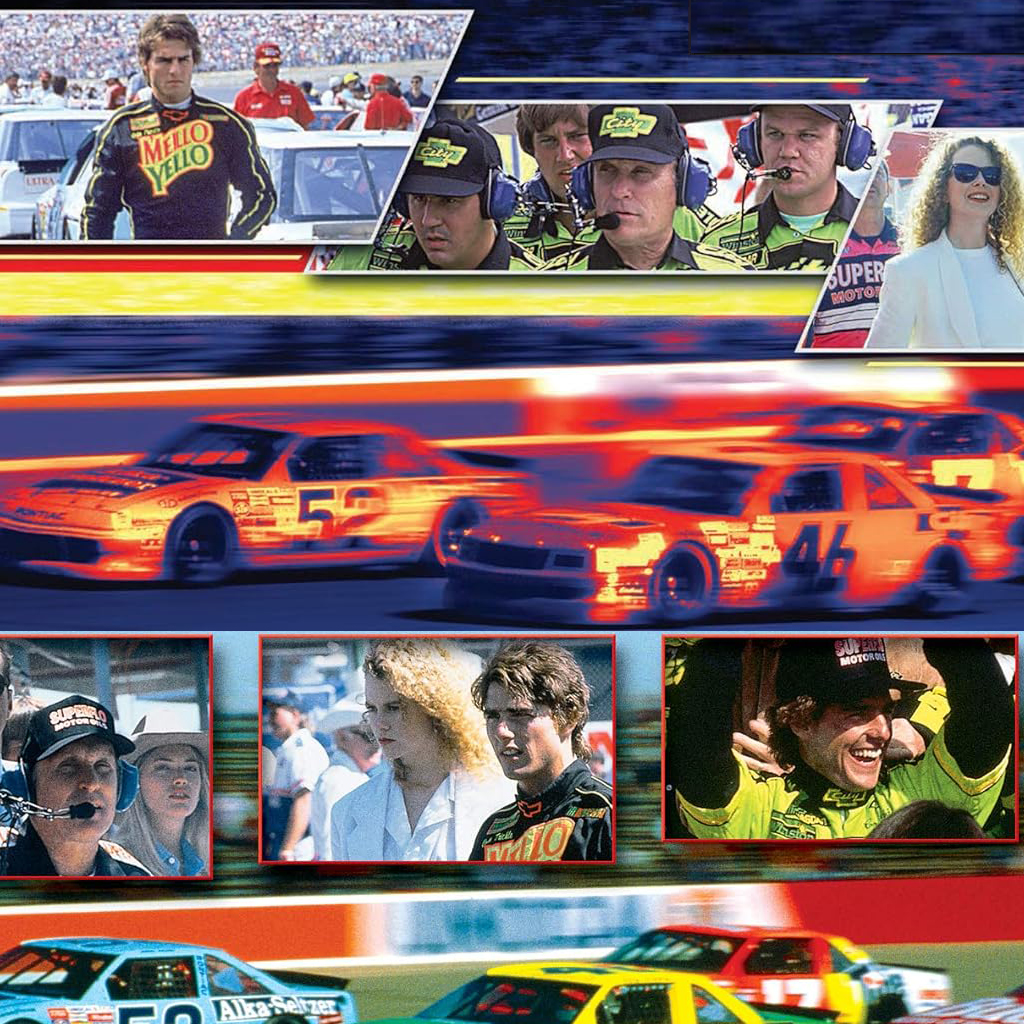No products in the cart.
All
Apparel
Baseball Jersey
Hockey Jersey
Summer Collection
Halloween Collection
Independence Day
Rugs | Doormat | Blanket
Bedding Set
Cut Metal Signs
Home

“Days of Thunder” is a 1990 American sports action drama that brings NASCAR racing to the big screen in a way few films have managed before or since. Directed by Tony Scott, produced by Jerry Bruckheimer and Don Simpson, and starring Tom Cruise as Cole Trickle, this high-octane cinematic ride is as much about the people behind the wheel as it is about the roaring engines. The film captures the excitement of stock car racing while weaving in human drama, rivalry, and redemption. At the center of the movie are the racers, their distinctive uniforms and racing suits, and the culture surrounding the sport—including fan gear like branded jackets, hoodies, sweatshirts, t-shirts, baseball caps, and even collectible hockey jerseys.
The film follows Cole Trickle, a young and talented driver from the world of open-wheel racing who is recruited into NASCAR by car dealership owner Tim Daland. Paired with veteran crew chief Harry Hogge, Cole quickly gains attention for his raw speed and fearless style. But his lack of experience with stock cars creates tension with his crew and rivals. After a serious crash, Cole must recover with the help of Dr. Claire Lewicki, both physically and mentally, before returning to the track for a final showdown.
The film is not only a showcase of NASCAR’s intensity but also a portrait of ambition, mentorship, and resilience. For racing fans, it offered a glimpse into the personalities that define the sport. For casual viewers, it provided thrilling action and memorable performances.
While Cole Trickle is the central figure, “Days of Thunder” is populated with a variety of racing personalities that add depth to the story:
Each of these characters is defined not just by their driving style, but also by their racing uniform and suit. In NASCAR, a driver’s suit is more than clothing—it’s a piece of safety equipment, a sponsor billboard, and a symbol of their team’s identity.

In “Days of Thunder,” the racing suits worn by the characters are authentic in design, closely modeled after real NASCAR fireproof uniforms. These suits serve three key purposes:
In addition to suits, drivers also wear matching gloves, shoes, and helmets. The uniformity of this gear is part of the visual appeal of NASCAR and is one reason fans seek out replica jackets, hoodies, sweatshirts, and t-shirts to show support for their favorite drivers.
One of the film’s lasting impacts is the merchandising boom it inspired. Just as fans buy apparel for their favorite real-life drivers, “Days of Thunder” enthusiasts embraced gear inspired by the movie. The iconic Cole Trickle Mello Yello jacket became a collector’s item, while casual wear like branded hoodies, sweatshirts, and t-shirts made it possible for fans to sport their love of the movie off the track.
This crossover from the track to everyday fashion mirrors NASCAR’s own marketing success. Movie-branded apparel helped cement “Days of Thunder” as more than just a film—it became a lifestyle statement for racing fans.
While the film focuses on stock car racing, fan merchandise went beyond the track. Limited edition baseball jerseys featuring Cole Trickle’s number and colors became popular collector’s pieces. Similarly, themed hockey jerseys offered fans a unique way to display their movie loyalty during other sporting events.
These crossover apparel items allowed the branding and color schemes of “Days of Thunder” to reach audiences who might not be traditional NASCAR fans.
One of the most impressive aspects of “Days of Thunder” is the way it captured racing sequences. The crew filmed at actual NASCAR events, with specially prepared cars blending into the field for a few laps before pulling off. This gave the movie’s racing scenes a sense of authenticity rarely matched in sports films.
The production team worked closely with Hendrick Motorsports to prepare cars that were visually accurate and performance-ready. This partnership ensured that everything from the sound of the engines to the stitching on the drivers’ suits was true to life.
Cole Trickle’s journey is central to the film’s narrative. He starts as a raw talent who relies on instinct and aggression but gradually learns the importance of strategy, communication, and respect. Harry Hogge’s mentorship is key to this transformation, teaching Cole that winning requires more than speed—it requires patience and teamwork.
The evolving relationship between Cole and Rowdy Burns also provides an emotional backbone to the story. What begins as a fierce rivalry turns into camaraderie, showing how mutual respect can emerge from competition.
Upon its release, “Days of Thunder” received mixed reviews from critics but performed well at the box office, grossing over $158 million worldwide. Over time, it has gained cult status, especially among racing fans who appreciate its blend of drama and authentic racing action.
The film also boosted NASCAR’s visibility in the early 1990s, introducing millions to the sport and its culture. The popularity of movie-related uniform replicas, racing suits, and fan jackets demonstrated how deeply the film resonated with audiences.
The film’s soundtrack, featuring artists like Hans Zimmer, Guns N’ Roses, and Elton John, added to its adrenaline-charged atmosphere. The combination of high-speed visuals and powerful music helped cement the movie’s place in pop culture.
References to “Days of Thunder” appear in TV shows, commercials, and other films. NASCAR teams have even run tribute paint schemes inspired by Cole Trickle’s Mello Yello car during special events.
The focus on racing uniforms and suits isn’t just visual—it reinforces the film’s themes of professionalism, preparation, and identity. Just as a soldier’s uniform commands respect, a driver’s suit symbolizes commitment to the sport. Fans adopting jackets, hoodies, sweatshirts, t-shirts, baseball caps, and hockey jerseys are participating in that identity, making them part of the extended racing family.
“Days of Thunder” remains one of the most memorable racing films ever made. Its combination of authentic NASCAR action, compelling character arcs, and stylish presentation has ensured its place in cinema history. The film celebrates not just the thrill of victory, but the discipline and dedication symbolized by the racing uniform and suit. Through its characters’ iconic looks—from the driver’s jacket to fan hoodies, sweatshirts, t-shirts, baseball jerseys, and hockey jerseys—the movie created a lasting visual identity that fans continue to embrace more than three decades later.